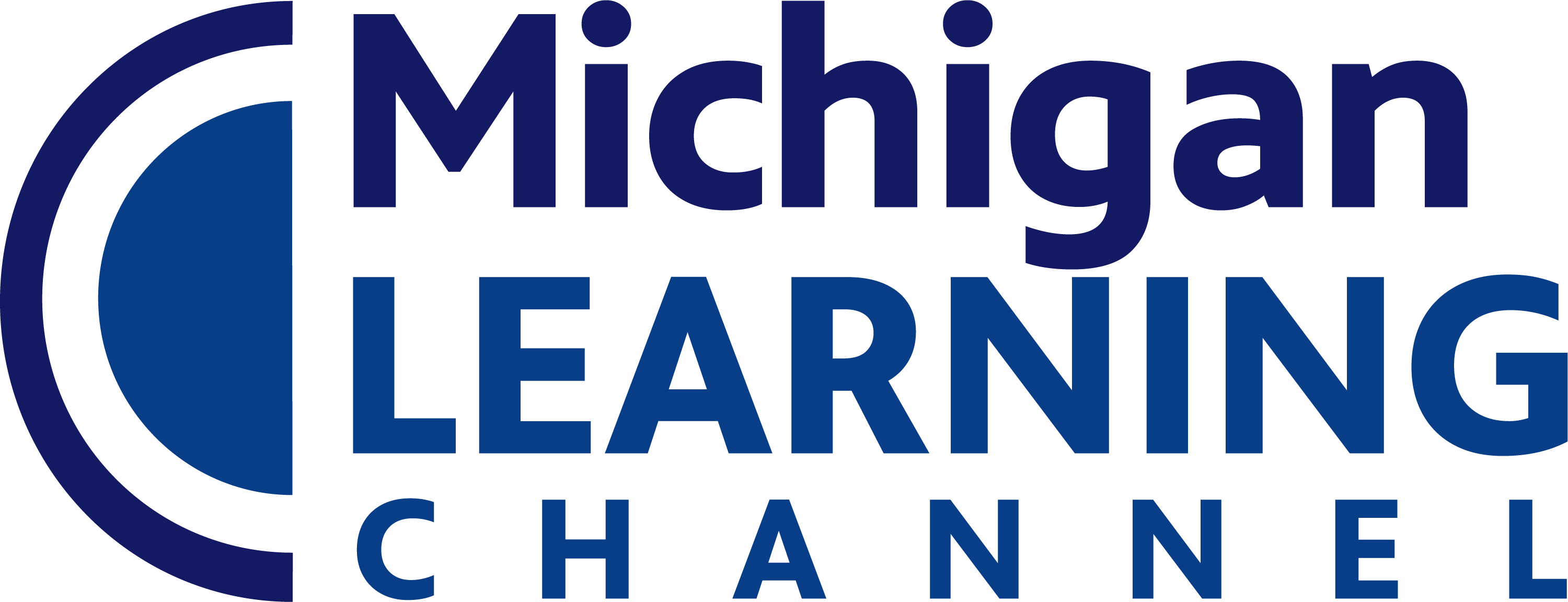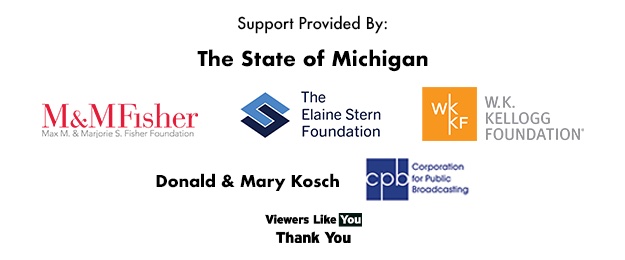Subjects
Shows
Emerging Global System – differentiate between the global systems of trade, migration, and political power from those in the previous [...]
Diffusion of World Religions – evaluate the impact of the diffusion of world religions and belief systems on social, political, [...]
Cultural Encounters and the Columbian Exchange – explain the demographic, environmental, and political consequences of European oceanic travel and conquest.
The Trans-Atlantic Slave Trade – analyze the causes and development of the Atlantic trade system with respect to the capture [...]
Afro-Eurasian Empires – compare and contrast the different ways governments expanded or centralized control across various parts of Afro-Eurasia, and [...]
Global Revolutions – explain the characteristics, extent, and impact of the global revolutions, including but not limited to changes in [...]
Worldwide Migrations and Population Changes – analyze the causes and consequences of shifts in world population and major patterns of [...]
Understand artistic knowledge as an important tool for successful living in the 21st century. (21st Century Skills: II.1, II.5, III.7)
Analyze the impact of visual culture on society. (21st Century Skills: I.3, III.2, III.7)
Identify the role visual arts play in enhancing civic responsibility and community. (21st Century Skills: I.3, I.6, III.2, III.4, III.7, [...]
Apply organizational principles and methods to create innovative works of art and design products. (21st Century Skills: I.1, I.2, III.3)
Apply knowledge and skill to symbolize the essence of an idea. (21st Century Skills: I.1, I.6)
Reflect, articulate, and edit the development of artwork throughout the creative process. (21st Century Skills: I.4, II.7, III.3, III.4)
Use emergent technologies and materials to create artistic products that demonstrate knowledge of context, values, and aesthetics. (21st Century Skills: [...]
Create collaboratively to resolve visual problems. (21st Century Skills: I.1, I.4, I.5, III.1)
Explore social and global issues through the application of the creative process. (21st Century Skills: III.7, III.8, III.9, III.10)
Analyze and describe the formal characteristics of a work of art or design. (21st Century Skills: I.3, II.1, III.1)
Describe how organizational principles are used to elicit emotional responses. (21st Century Skills: I.3, II.1, III.1)
Critically observe a work of art to evaluate and respond to the artist’s intent using art vocabulary and terminology. (21st [...]
Evaluate the quality and effectiveness of one’s artwork. (21st Century Skills: I.3, II.1, III.4)
Recognize and understand the relationships between personal experiences and the development of artwork. (21st Century Skills: I.3)
Observe and describe artwork with respect to history and culture. (21st Century Skills: I.6, II.1, III.1, III.2, III.7, III.8, III.9, [...]
Describe the functions and explore the meaning of specific art objects within varied cultures, times, and places. (21ST Century Skills: [...]
Analyze the correlation between art, history, and culture throughout time. (21st Century Skills: I.6, III.1, III.2, III.7, III.8, III.9, III.10)
Use knowledge of art and design history to inform personal artwork. (21st Century Skills: I.1, I.3, II.5, II.7, III.3, III.7)
Design creative solutions that impact everyday life. (21st Century Skills: I.1, I.2, I.4, III.3, III.4, III.6)
Explore and understand the variety of art and design careers. (21st Century Skills: II.2, II.3, II.5, III.7)
Explore and understand the application of the creative process throughout career pathways. (21st Century Skills: II.1, II.2, II.3, II.5, III.2, [...]
Identify commonalities, differences, and connections between the art disciplines. (21st Century Skills: I.3)
Recognize the role of art across the academic curriculum. (21st Century Skills: I.3)
Justify selections of text, interpretation, and visual, aural, and electronic art.
Articulate and justify personal aesthetic criteria for critiquing dramatic texts and events that compare perceived artistic intent with the final [...]
Identify and research cultural, historical, and symbolic clues in dramatic texts, and evaluate the validity and practicality of the information [...]
Analyze and critique the whole and the parts of dramatic performances, taking into account the context, and constructively suggest alternative [...]
Evaluate personal and others’ collaborative efforts and artistic choices in informal and formal productions.
Construct social meanings from informal and formal productions and from dramatic performances from a variety of cultures and historical periods, [...]
Compare how similar themes are treated in drama from various cultures and historical periods, illustrate with informal performances, and discuss [...]
Identify and compare the lives, works, and influence of representative theatrical artists in various cultures and historical periods.
Identify cultural and historical sources of American theatre and musical theatre.
Analyze the effect of personal cultural experiences on their dramatic work.
Describe and compare the basic nature, materials, elements, and means of communicating in theatre, dramatic media, musical theatre, dance, music, [...]
Determine how the non-dramatic art forms are modified to enhance the expression of ideas and emotions in theatre.
Apply acquired knowledge and skills to the creative problem solving process. (21st Century Skills: I.4, II.2)
Intentionally use art materials and tools when applying techniques and skills to communicate ideas. (21st Century Skills: I.6, III.3, III.6)
Demonstrate understanding of organizational principles and methods to solve specific visual arts problems. (21st Century Skills: I.4, II.5, III.3)
Exhibit, present, and publish quality works of art. (21st Century Skills: I.4, I.6, III.3, III.6)
Responsibly and safely manage materials and tools. (21st Century Skills: III.4, III.6, III.8)
Identify, define problems, and reflect upon possible visual solutions. (21st Century Skills: I.2, I.3, I.4)
II. Create artwork using materials and techniques with skill so that personal intentions are carried out. (21st Century Skills: I.1, [...]
Subjects
Shows
Emerging Global System – differentiate between the global systems of trade, migration, and political power from those in the previous [...]
Diffusion of World Religions – evaluate the impact of the diffusion of world religions and belief systems on social, political, [...]
Cultural Encounters and the Columbian Exchange – explain the demographic, environmental, and political consequences of European oceanic travel and conquest.
The Trans-Atlantic Slave Trade – analyze the causes and development of the Atlantic trade system with respect to the capture [...]
Afro-Eurasian Empires – compare and contrast the different ways governments expanded or centralized control across various parts of Afro-Eurasia, and [...]
Global Revolutions – explain the characteristics, extent, and impact of the global revolutions, including but not limited to changes in [...]
Worldwide Migrations and Population Changes – analyze the causes and consequences of shifts in world population and major patterns of [...]
Understand artistic knowledge as an important tool for successful living in the 21st century. (21st Century Skills: II.1, II.5, III.7)
Analyze the impact of visual culture on society. (21st Century Skills: I.3, III.2, III.7)
Identify the role visual arts play in enhancing civic responsibility and community. (21st Century Skills: I.3, I.6, III.2, III.4, III.7, [...]
Apply organizational principles and methods to create innovative works of art and design products. (21st Century Skills: I.1, I.2, III.3)
Apply knowledge and skill to symbolize the essence of an idea. (21st Century Skills: I.1, I.6)
Reflect, articulate, and edit the development of artwork throughout the creative process. (21st Century Skills: I.4, II.7, III.3, III.4)
Use emergent technologies and materials to create artistic products that demonstrate knowledge of context, values, and aesthetics. (21st Century Skills: [...]
Create collaboratively to resolve visual problems. (21st Century Skills: I.1, I.4, I.5, III.1)
Explore social and global issues through the application of the creative process. (21st Century Skills: III.7, III.8, III.9, III.10)
Analyze and describe the formal characteristics of a work of art or design. (21st Century Skills: I.3, II.1, III.1)
Describe how organizational principles are used to elicit emotional responses. (21st Century Skills: I.3, II.1, III.1)
Critically observe a work of art to evaluate and respond to the artist’s intent using art vocabulary and terminology. (21st [...]
Evaluate the quality and effectiveness of one’s artwork. (21st Century Skills: I.3, II.1, III.4)
Recognize and understand the relationships between personal experiences and the development of artwork. (21st Century Skills: I.3)
Observe and describe artwork with respect to history and culture. (21st Century Skills: I.6, II.1, III.1, III.2, III.7, III.8, III.9, [...]
Describe the functions and explore the meaning of specific art objects within varied cultures, times, and places. (21ST Century Skills: [...]
Analyze the correlation between art, history, and culture throughout time. (21st Century Skills: I.6, III.1, III.2, III.7, III.8, III.9, III.10)
Use knowledge of art and design history to inform personal artwork. (21st Century Skills: I.1, I.3, II.5, II.7, III.3, III.7)
Design creative solutions that impact everyday life. (21st Century Skills: I.1, I.2, I.4, III.3, III.4, III.6)
Explore and understand the variety of art and design careers. (21st Century Skills: II.2, II.3, II.5, III.7)
Explore and understand the application of the creative process throughout career pathways. (21st Century Skills: II.1, II.2, II.3, II.5, III.2, [...]
Identify commonalities, differences, and connections between the art disciplines. (21st Century Skills: I.3)
Recognize the role of art across the academic curriculum. (21st Century Skills: I.3)
Justify selections of text, interpretation, and visual, aural, and electronic art.
Articulate and justify personal aesthetic criteria for critiquing dramatic texts and events that compare perceived artistic intent with the final [...]
Identify and research cultural, historical, and symbolic clues in dramatic texts, and evaluate the validity and practicality of the information [...]
Analyze and critique the whole and the parts of dramatic performances, taking into account the context, and constructively suggest alternative [...]
Evaluate personal and others’ collaborative efforts and artistic choices in informal and formal productions.
Construct social meanings from informal and formal productions and from dramatic performances from a variety of cultures and historical periods, [...]
Compare how similar themes are treated in drama from various cultures and historical periods, illustrate with informal performances, and discuss [...]
Identify and compare the lives, works, and influence of representative theatrical artists in various cultures and historical periods.
Identify cultural and historical sources of American theatre and musical theatre.
Analyze the effect of personal cultural experiences on their dramatic work.
Describe and compare the basic nature, materials, elements, and means of communicating in theatre, dramatic media, musical theatre, dance, music, [...]
Determine how the non-dramatic art forms are modified to enhance the expression of ideas and emotions in theatre.
Apply acquired knowledge and skills to the creative problem solving process. (21st Century Skills: I.4, II.2)
Intentionally use art materials and tools when applying techniques and skills to communicate ideas. (21st Century Skills: I.6, III.3, III.6)
Demonstrate understanding of organizational principles and methods to solve specific visual arts problems. (21st Century Skills: I.4, II.5, III.3)
Exhibit, present, and publish quality works of art. (21st Century Skills: I.4, I.6, III.3, III.6)
Responsibly and safely manage materials and tools. (21st Century Skills: III.4, III.6, III.8)
Identify, define problems, and reflect upon possible visual solutions. (21st Century Skills: I.2, I.3, I.4)
II. Create artwork using materials and techniques with skill so that personal intentions are carried out. (21st Century Skills: I.1, [...]


